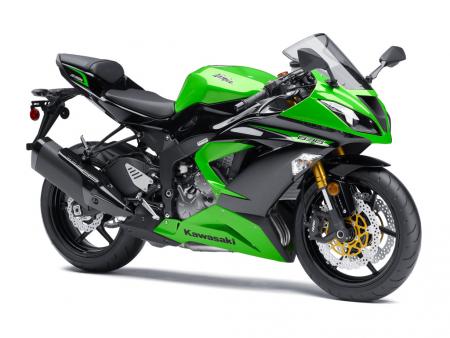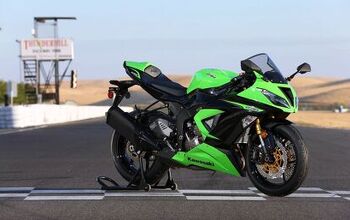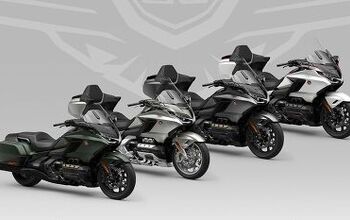2013 Kawasaki Ninja ZX-6R Preview - Motorcycle.com
Making its worldwide debut as part of Kawasaki’s “Times Square Takeover” event in the heart of New York City, Team Green officially unveiled the 2013 Ninja ZX-6R, which gets a bump back to 636cc after a six-year absence. While this move is sure to shake up the 600cc supersport racing class, especially as a race-homologated, 600cc ZX-6RR version won’t be available this time around, the larger displacement and subsequent torque bump will make the Ninja a more capable street machine and track weapon. In addition, Kawasaki set out to make the new ZX-6R the most technologically advanced Ninja ever. Kawasaki also unveild the new Ninja 300, which you can read about here.
Those interested in racing a middleweight Kawasaki will still be able to purchase remaining 2012 stock, but once they’re gone, you’ll either have to race the 636 against bigger bikes or turn to other brands. Kawasaki reps weren’t able to provide an official answer as to the future of the 600cc variant, leaving us to speculate the door might still be open for a contender that’s legal in racing circles.
But back to the new bike. A bump in stroke from 42.5mm to 45.1mm accounts for the 37cc larger engine. Bore remains the same as last year’s model at 67.0mm. Digital fuel injection utilizes 38mm Keihin throttle bodies, while both intake and exhaust ports gain in size.
Intake camshafts are tuned for longer duration, and both cams get increased lift as well. Connecting rods are 1.5mm shorter than before but feature thicker stems, allowing them to cope with the longer crank throws. After this, the engine receives numerous strength-enhancing or friction-reducing updates.
The airbox gains 12.5% more internal volume, and ultra-fine atomizing injectors now spray sub-60-micron droplets. This means highly-efficient combustion, for better power and torque throughout the rev range.
A new F.C.C. clutch with “assist” and slipper functions helps put the power to the ground. The “assist” cam acts like a servo mechanism to pull the clutch hub and operating plate together and compress the clutch plates under load. This allows the total clutch spring count and tension to be reduced, resulting in a 20% overall reduction in effort at the clutch lever.
The assist cam also increases the clutch’s maximum torque capacity, to help it cope with the extra power from the bigger engine, without gaining any weight. The slipper function should be familiar by now to any sportbike enthusiast, as it keeps the rear wheel from hopping and locking during aggressive downshifts.
Kawasaki’s traction control system, or KTRC, makes its way to the new 636, accessed by a simple thumb-operated switch on the left clip-on. With three different modes (four including off), Mode 1 offers considerable slippage for racetrack use. Mode 2 is suited to sporty street riding with limited amounts of slip, while Mode 3 eliminates any rear wheel slippage whatsoever, for especially tricky conditions.
The ZX-6R also includes two selectable power modes. “Full” makes available all of the bike’s power, while “Low” limits the ZX to 80% of its max power. TC and power modes function independently, resulting in eight possible TC/power mode combinations.
Interestingly, the only additional piece of hardware required for the KTRC system over the standard version are wheel speed sensors at each end, which are conveniently also utilized on ABS versions of the 6R (more on that later). Highly advanced (and proprietary) software settings make up the rest of the system. In TC Modes 1 and 2, focus is on maximizing forward drive by monitoring numerous parameters 200 times per second.
Ignition timing is then manipulated to control power when needed. TC Mode 3 utilizes three-way intervention, using ignition timing, fuel delivery and the intake tract’s sub-throttle bodies to keep the rear wheel in line with the front.
Keeping up with the advanced electronics is a new generation fork from Showa, the Big Piston-Separate Function Fork (BP-SFF). Like the previous generation BPF, damping circuits are controlled by a large-diameter piston, but, in this version, damping takes place only in the right-side fork leg, with rebound- and compression-damping adjusters conveniently located at the top of the fork tube. Spring preload is adjusted at the top of the left tube.
Stopping power comes from a new Nissin monobloc four-piston caliper biting on 310mm wave rotors in front, fed fluid via a radial-mount master cylinder. A lighter, 220mm wave rotor and single-piston caliper sit out back. ABS models come equipped with Kawasaki’s Intelligent anti-lock Brake System (KIBS) using a Bosch ABS unit. Coming in at 427.8 pounds, the ABS model weighs only 4.4 pounds more than its non-ABS counterpart.
Using the KTRC wheel-speed sensors, the ECU monitors speed, brake caliper pressure, engine rpm, throttle position, clutch actuation and gear selection. The KIBS ABS ECU communicates with the engine’s ECU, and when it senses a potential lock-up situation tells the ABS unit to temporarily reduce brake line pressure. It does so while reducing pulsation at the lever during intervention.
I was one of the fortunate few to have sampled the new bike’s ergonomics by sitting on a display model this morning prior to its debut in New York City today. It feels very similar to its predecessor, with the rider placed in a racer-like forward position. Bars don’t feel exceedingly low and pegs not too high.
The 2013 Ninja ZX-6R will be available in three colors: Pearl Flat Stardust White, Metallic Spark Black and Lime Green. Pricing is yet to be determined as of this writing.
Related Reading
Ninjas in New York
EPA Documents Reveal 2013 Kawasaki Ninja 300, 400R, Confirms 636cc Ninja ZX-6R
2013 Kawasaki ZX-6R Reportedly To Return To 636cc Displacement
More by Troy Siahaan


































Comments
Join the conversation